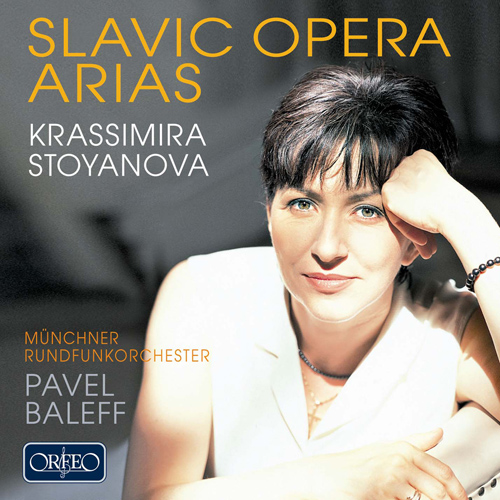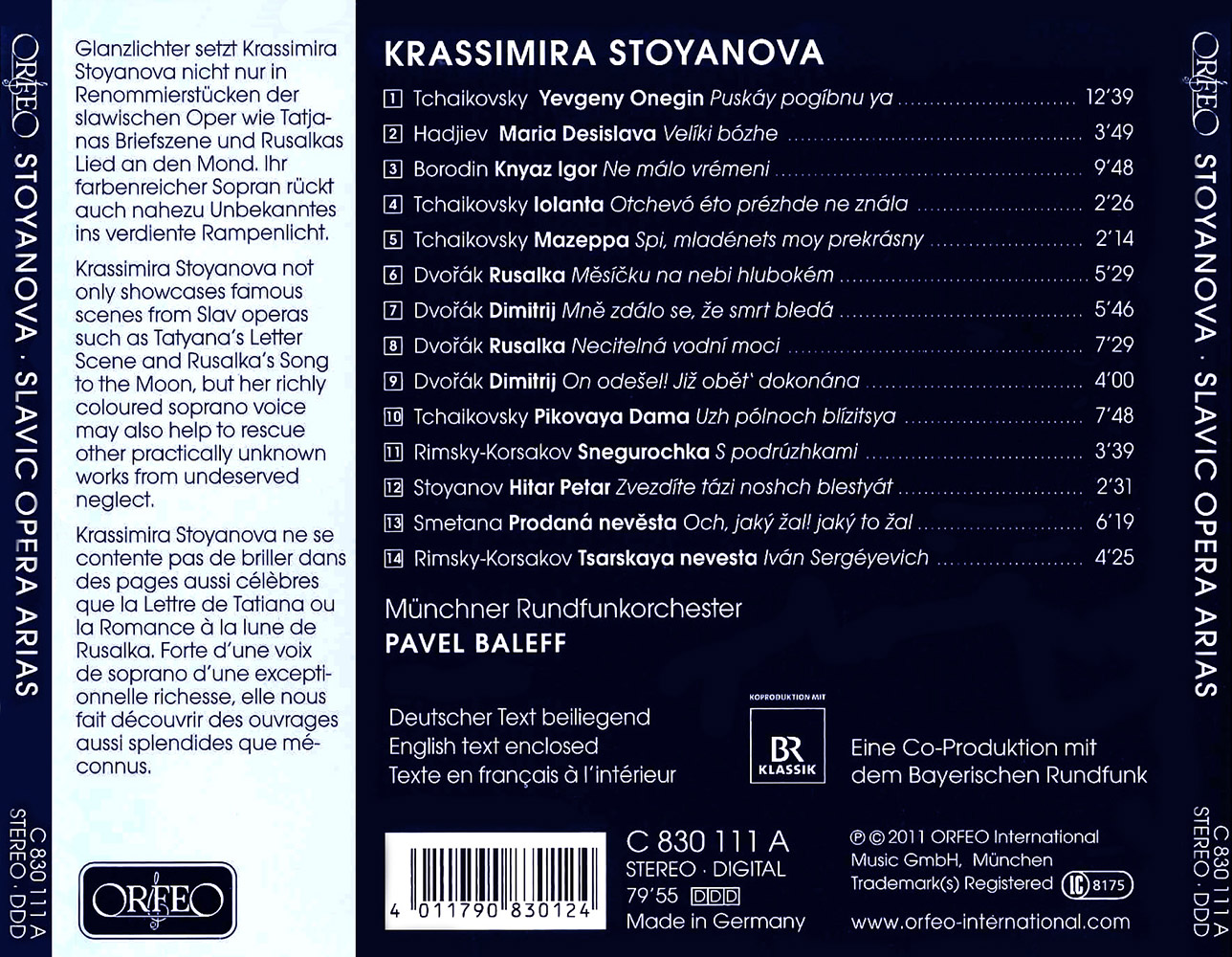Krassimira Stoyanova: Slavic Opera Arias
Although she came to international prominence in leading soprano roles in Italian and French operas, Krassimira Stoyanova is equally at home in the Slav repertory, a point well illustrated by her European successes as Xenia in a touring production of Dvořák’s Dimitrij under Sir Richard Hickox and by last year’s triumphant performances as Dvořák’s Rusalka at the Zurich Opera. And she has also appeared frequently in one of the most famous roles in Russian opera: Tatyana in Tchaikovsky’s Eugene Onegin.
Krassimira Stoyanova
Foto: Johannes IfkovitsAll of which is a good enough reason to present scenes from all these works as part of her new recital for Orfeo, an album in which she appears with the Munich Radio Orchestra under Pavel Baleff. And yet this varied compilation includes far more than this, for with Parashkev Hadjiev’s Maria Desislava and Veselin Stoyanov’s Hitar Petar, Krassimira Stoyanova also draws attention to two operas from her Bulgarian homeland. Both are 20th-century works, and both of the soprano arias that are taken from them reveal a high degree of originality in their handling of the orchestra and their melodic writing. With every breath Krassimira Stoyanova brings out all the elegance, beauty and radiant colour of these two very different pieces. And the same is true of Tchaikovsky’s final opera Iolanta and of Maria’s lullaby from Mazeppa, a number which, dramaturgically speaking, provides a tragic and profoundly affecting dénouement to the action and which is sung by Krassimira Stoyanova with all the requisite simplicity, making its impact all the more intense. The same may be said of Mařenka in Smetana’s The Bartered Bride, while Lisa’s aria from another of Tchaikovsky’s operas, The Queen of Spades, reveals all its dramatic potential. Finally, Krassimira Stoyanova displays her world-class credentials in the scenes from Borodin’s Prince Igor and from Rimsky-Korsakov’s The Snow Maiden and The Tsar’s Bride, allowing her uniquely varied vocal facets to flash like diamonds, while building to an impressive climax within the aria’s overarching form.


















